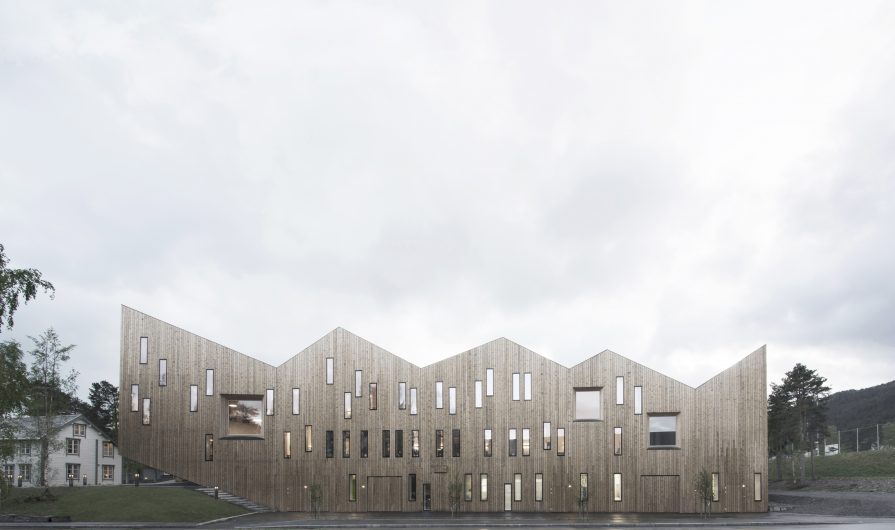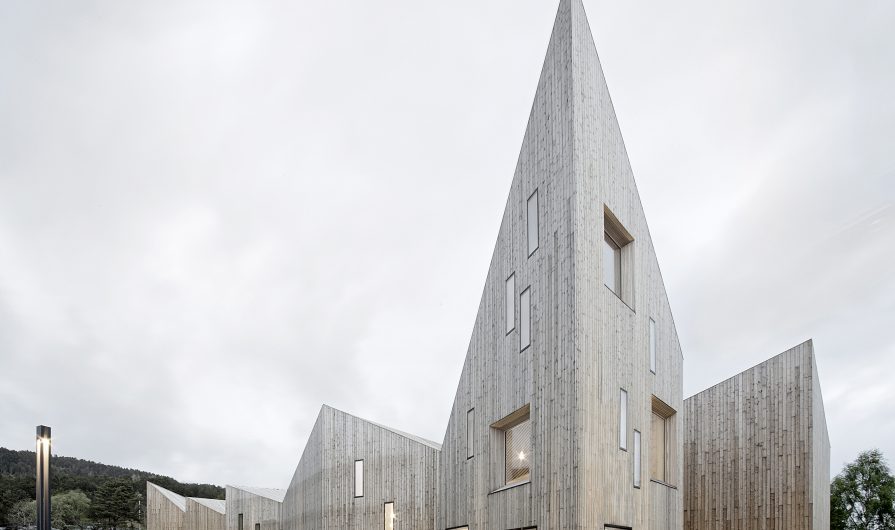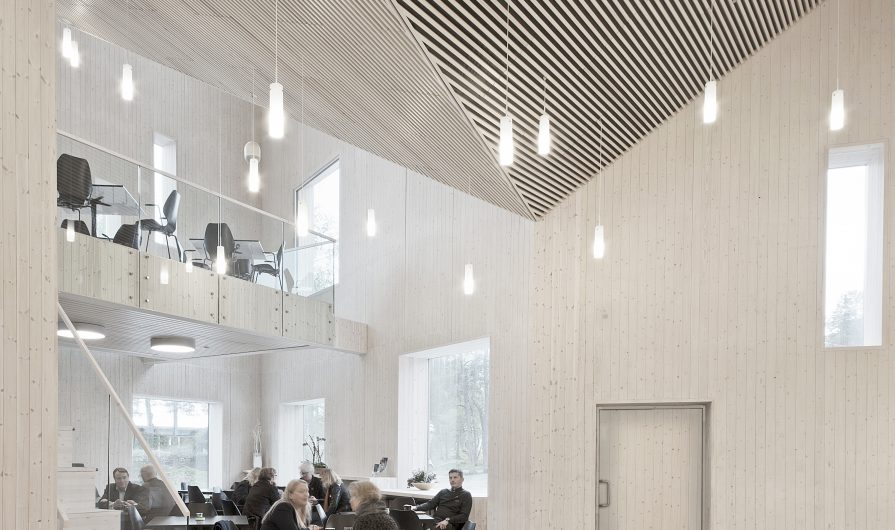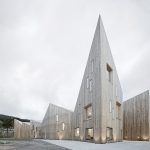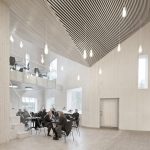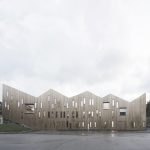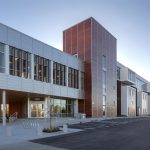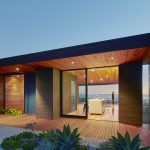Pine architectural form combines region’s folk culture and characteristic landscape in a larger composition
The Romsdal Folk Museum is an architectural attraction and a treasured landmark that embodies the history and identity of the entire region. The architect’s intention is for the structure to signal its meaning and function through its architectural expression and use of local materials. The scale of the building refers to the urbanity and morphology of the town. The 37,673-sq.ft. project has an open and progressive layout that makes diverse utilization possible.
The museum design is rooted in rationality and sustainability and the plan geometry is deceptively simple. The characteristic angled shapes are limited to the roof and the external wall, making the circulation and internal organization clear and flexible. The public areas are clearly separated from the administration wing on both the ground and first floor.
Exhibition rooms, the auditorium and the library are all placed on the ground floor to increase flexibility and user experience. The transparency of the reception room permits supporting internal and external activities. Large sliding doors separate the permanent and temporary exhibition areas, giving the curators the ability to easily combine or separate the spaces. The archives and workshops are located on the basement level, with the vertical circulation of large items facilitated by a large elevator.
Pine is the primary building material. The terrain required the use of some concrete, however, its use was restricted to the foundation. Exterior walls and ceilings are covered with pine treated with a bio-based oil.
Varied openings filter the daylight in such way that the internal space is enriched by gradations and translucency. However, the main exhibition rooms are black boxes, giving the curators total control of artificial lighting in these areas. All the glazing units have high-performance glass and, in some locations, the glass is enhanced with silk-printed colors and patterns.
The Romsdal Folk Museum strategically employs several low-tech building solutions. It embodies the national policy in Norway to aim for a more sustainable future. The museum is built using Norwegian timber technology and acts as a hub for cultural development.
In this building, the people of Molde, as well as visitors and tourists, are given the opportunity to connect and to build a wider community. The museum hosts not only exhibits about Norwegian culture but also concerts, workshops and lectures.
The architectural form brings together the region’s folk culture and the area’s characteristic landscape in a larger composition. The range of perspectives and activities ensures a broad audience, with the museum becoming a living center for the exploration of the region’s history, contemporary culture, and future.
Client
Molde, Norway
Architect
Oslo, Norway
Structural Engineer
Sandvika, Norway
General Contractor
Molde, Noway
Timber Suppliers
Amot, Norway
Sweden
Photography
Reiulf Ramstad Arkitekter, Erik Hattrem,
Søren Harder Nielsen

